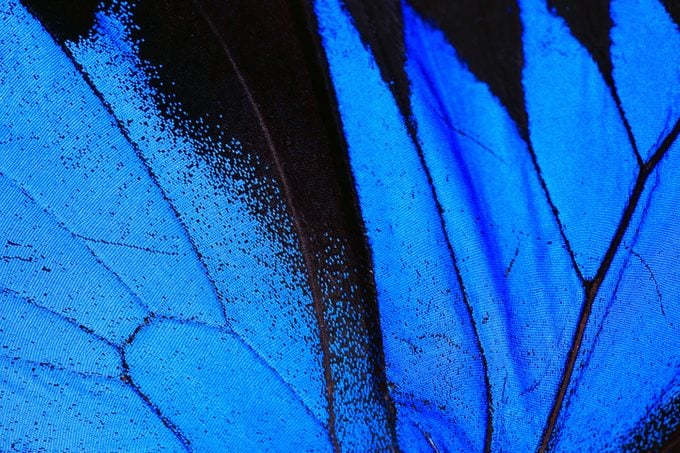Energy-saving paint is a new innovation from a research team out of the University of Central Florida.

This New Energy-Saving Paint Was Inspired by Butterflies

Human beings have been making and using paint for the last 30,000 years, so you might think there’s no more room for paint-related innovation, but you’d be wrong. Recently, a scientific research team out of the University of Central Florida’s NanoScience Technology Center has invented something called “energy-saving paint,” and it shows every sign of shaking up the paint industry in a big way in the near future. The folks behind the innovation hope it will become a cost-effective, energy-efficient alternative to standard paint products.
What is Energy-Saving Paint and How Does It Work?
Energy-saving paint is a new type of paint based on structural color rather than color pigment, unlike every paint previously created in human history. This sounds complex but boils down to one main difference. Color pigment works by absorbing all colors of light except one—the color our eyes see. Structural color works by reflecting and scattering all colors of light—some more prominently than others—leading to hues that appear deeper and richer, and seem to change shades as we look at them from different angles. Structural color is why peacock tail feathers shimmer with a rich greenish hue that seems to change as we turn our heads, appearing almost holographic. But energy-saving paint isn’t just about rich colors that look pretty.
According to University of Central Florida professor and researcher Debashis Chanda, energy-saving paint, also called plasmonic paint, has several major advantages over the pigment-based stuff we’ve used for centuries. Working at UCF’s NanoScience Technology Center, Chanda and his team invented energy-saving paint, and say its reflective properties should allow it to resist fading for hundreds of years. This stands in stark contrast to regular paint, which fades with time as its absorptive qualities decrease. So where does the “energy-saving” part come in? Because the paint reflects and scatters light rather than absorbing it, the painted surface can be up to 30 degrees cooler than the same surface would be if clad in standard paint. This difference could lead to much less air conditioner use in warm regions and potentially massive energy savings.
How Was This New Paint Inspired by Butterflies?

Chanda and his team drew inspiration for energy-saving paint from the many stunning examples of structural color found in nature. One of the most well-known is the striking blue shade of male morpho butterflies. When examined under a microscope, the wings of these butterflies display two separate colorless segments, which when viewed together reflect and scatter light in a way that appears vividly blue to our eyes. Energy-saving paint is a human-created version of this biological phenomenon, using aluminum and aluminum oxide (two colorless materials) in combination to produce brilliant structural color.
Is This Paint Available Now?
So far, the plasmonic paint created by Chanda and his team isn’t available commercially. The formula is still being tweaked, and at the moment it’s very expensive to produce in a lab setting. Chanda and his team plan to refine the paint further while investing in ways to scale up production in a way that’s economically viable.




















